The Best Summer Tires For a Season of Sporty Driving
Summertime is here, which means it’s time to get your fun four-wheeled ride out of storage and back on the road. But first, take a look at the tires wrapped around those good-looking wheels. Are they in good shape, or is it time to replace them before you set out on another summer of road trips and spirited jaunts along your favorite back roads? Regardless of whether your fun vehicle is a corner-carving Miata or a muscle car that excels in straight-line charging, you might want to consider a set of summer-only tires for your car.
The best summer tires are made specifically to optimize grip on dry and wet roads in warm weather and don’t suffer from the compromises that let all-season tires tackle cold or snowy conditions. Once we go through our top picks of the best summer tires, we’ll explain more about what sets a summer tire apart from an all-season design; for now, know that the best summer tires will help your roadster, hot hatch, sport sedan, or muscle car perform the way its manufacturer intended so that you get as much fun as possible out of driving it.
For more information on the best summer tires, refer to our table of contents.
Table of contents
- 1. Editor's Pick: Hankook Ventus S1 Noble2
- 2. Best on a Budget: Lexani LXUHP-207
- 3. Firestone Firehawk Indy 500
- 4. Kumho Ecsta PS31
- 5. BFGoodrich G-Force Sport Comp 2
- What’s the difference between summer tires and all-season tires?
- What do a tire’s treadwear, temperature, and traction grade ratings mean?
1. Editor's Pick: Hankook Ventus S1 Noble2
The Hankook Ventus S1 Noble2 makes our list as a high-performance tire that toes the line between the all-season and summer categories. Hankook’s tread design looks the part of a performance tire, with the narrow grooves characteristic of one conceived primarily for warm, clear roads. However, Hankook says aqua hydro blocks promise good braking on wet roads, while a tread rib next to the tire’s outside shoulder improves cornering grip and reduces the amount of road noise that gets into your car’s cabin. Further, 3D kerfs in the tread help the rubber blocks maintain their shape in hard cornering.
Hankook makes the Ventus S1 Noble2 in sizes ranging from 16 inch to 20 inch and tread widths up to 285 mm. Most sizes boast a “AA” traction rating and a “500” treadwear rating, so you’ll enjoy good grip in dry and wet road conditions and long tread life. Don't worry, we'll go more in depth about a tire's ratings later on in the article if these letters and numbers make little sense to you.
While the Hankook Ventus S1 Noble2 is not the least expensive summer tire you’ll find, its price tag is quite reasonable for a tire designed to provide good summer-driving performance.
Pros | Good summer traction with some all-season capabilities, reasonable price |
Cons | Some complaints of low-frequency road noise heard at highway speeds |
2. Best on a Budget: Lexani LXUHP-207
It’s not hard to see why the Lexani LXUHP-207 made our list of the best summer tires. For one thing, as you’ll likely have noticed in your search, performance summer tires are hard to come by at affordable prices.
Lexani makes the LXUHP-207 in a range of 17-, 18-, and 19-inch sizes and this tire’s good-looking tread pattern make it well-suited to a wide range of sporty cars. Lexani says four longitudinal grooves and V-shaped elements help evacuate water from under the tire to prevent hydroplaning and improve your vehicle’s braking efficiency.
With a 500 treadwear rating, you should be able to get several summers' worth of driving on the LXUHP-207 before you need to replace them, depending on how much driving you're doing of course. If we can think of a reason this tire is inexpensive, it’s because its "A" traction rating means it gives up some cornering grip and wet-weather traction to other summer tires.
Pros | Low price, attractive design, long treadwear rating |
Cons | Middling traction and temperature ratings, one buyer complained of a noisy ride |
3. Firestone Firehawk Indy 500
Next on our list is a tire with no pretense of being anything but a summer tire: The Firestone Firehawk Indy 500 literally has the name of one of America’s greatest auto racing events right in its name. Of course, a race-inspired name alone doesn’t make a summer tire great. However, its design features do, and the Firehawk Indy 500 has plenty to boast about.
For one, you get Firestone’s proprietary pulse groove tread design to enhance water evacuation and hydroplaning resistance—an important characteristic in a tire designed for your speedy vehicle. Firestone says it refined the Firehawk Indy 500’s rubber compound for optimal braking on wet roads; meanwhile, this tire has wide shoulder tread blocks that give you capable handling and cornering grip on dry surfaces.
Despite the Firehawk Indy 500’s extreme-sounding name and aggressive look, Firestone makes this tire to fit rim sizes as small as 16 inch, with applications ranging up to 20-inch sizes for your high-end sporty vehicle or aftermarket wheels. The treadwear rating is 340, and temperature and traction ratings are both “A.”
Pros | Innovative tread design, should live up to extreme performance, comes in a wide range of sizes |
Cons | Not suitable for use even in light snow or winter weather, some buyers wished for a firmer sidewall for sharper cornering response |
4. Kumho Ecsta PS31
Like the country's automakers, South Korean tire manufacturer Kumho came out of nowhere and immediately made a name for itself by making products that performed well at affordable prices. The company’s Ecsta PS31 is no exception. This is a no-compromise summer tire that promises you a combination of highway-speed stability, low noise, and safety.
Kumho makes the Ecsta PS31 using a rubber compound that features high dispersable micro silica, which ensures an even distribution of silica to give you good traction in wet and dry conditions. The directional tread pattern has a solid center rib for high-speed stability, while 3D heat dimples prevent excess heat buildup in the tire to enhance treadwear no matter how aggressively you drive. Finally, four wide grooves and diagonal sipe microgrooves work together to prevent hydroplaning.
The Kumho Ecsta PS31 comes in sizes starting with 15 inch, making it a good option for you if you drive a sporty version of a compact economy car; 18-inch sizes at the top of the range will work on a variety of more focused performance cars and sport sedans. All sizes come with a 340 treadwear rating and “A” ratings for temperature and traction.
Pros | Impressive performance and an affordable price from an established tire brand, sized for a wide range of cars |
Cons | Some buyers wished for firmer sidewalls for a more immediate handling feel, no “AA” traction rating for ultimate high-speed confidence |
5. BFGoodrich G-Force Sport Comp 2
The final entry on our list of the best summer tires comes to us from BFGoodrich, one of America’s best-known tire manufacturers. As this tire’s name—G-Force Sport Comp 2—suggests, you should consider it if you like to “accelerate faster, corner harder, and brake shorter” than most, as BFGoodrich’s description indicates. If you want proof it can live up to those promises, consider this: Both the Ford Racing High Performance Driving School and Skip Barber Racing use this tire for their track vehicles.
But you can also count on these tires to provide good everyday performance on your street vehicle. A silica-infused rubber compound promises sharp steering response and good wet and dry surface grip. The directional tread is recognizable for its g-hook elements and dual center ribs for impressive feedback at your vehicle’s handling limit and good straight-line stability.
Under the G-Force Sport Comp 2’s tread are twin steel belts reinforced with nylon for a more stable tread that optimizes the tire’s contact patch—the four small areas that actually keep your vehicle going where you point it.
Pros | Strong racing pedigree, very aggressive tread design |
Cons | Relatively high price, numerous buyers complain of road noise |
What’s the difference between summer tires and all-season tires?
Photo credit: LeManna / Shutterstock.com
By its very nature, an all-season tire is a compromise designed to provide good grip in dry and wet conditions while also giving you useful traction in winter conditions. But just as you might already buy dedicated winter tires if you live in a part of the U.S. that gets severe winter weather, you can also choose summer-only tires optimized for clear roads and warm temperatures.
Summer tires can often be identified based on their shallower tread grooves and, in many cases, an asymmetrical or directional tread pattern designed to help you avoid hydroplaning in heavy rain. Also, you’ll often see a solid center rib on a summer tire’s tread that helps reduce road noise and improve handling stability.
A summer tire may also be made of a sticky rubber compound that enhances grip on dry and wet pavement. On the downside, that sticky compound may wear more quickly and increase fuel consumption compared to an all-season model.
What do a tire’s treadwear, temperature, and traction grade ratings mean?
When you shop for tires, you’ll notice that the specs for every tire model include a three-digit numerical treadwear grade and a pair of letter ratings that reference temperature and traction. Let’s take the BFGoodrich G-Force Sport Comp 2 tire as an example: its UTQG (Uniform Tire Quality Grade) specifications are 340 AA A, numbers and letters that can tell you a lot about how the tire is designed to perform.
This tire’s “AA” grade refers to how much traction you can expect when driving on wet surfaces. A grade of “AA” means the tire generates cornering g-forces of more than 0.54—or 0.54 times the force of gravity—on wet asphalt. The lower “A” rating you’ll see attached to other tires on our list means you’ll get more than 0.47 g of grip on the same surface.
The second “A” in the G-Force Sport Comp-2 UTQG specs is its temperature rating, which is especially important when it comes to high-performance summer tires like the ones you’re reading about here. The top “A” temperature rating means the tire is designed to withstand the heat buildup your tires will typically experience at speeds above 115 mph. This rating is critical if you plan to regularly drive at high speeds, as overheating your tires can cause them to fail catastrophically.
You can use the numerical treadwear rating to compare the promised tread life of different tire models. The higher the number, the longer you should be able to drive on a tire before the tread becomes too worn to provide safe traction. At one time, these ratings corresponded to actual mileage figures, but in recent years the treadwear grade exists more as a guideline for a tire’s predicted lifespan.
We are committed to finding, researching, and recommending the best products. We earn commissions from purchases you make using the retail links in our product reviews. Learn more about how this works.
Photo credit: fujji / Shutterstock.com
More by Chris Chase




















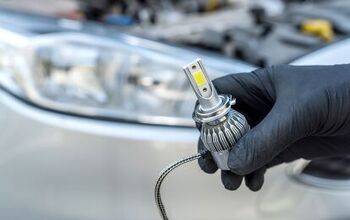




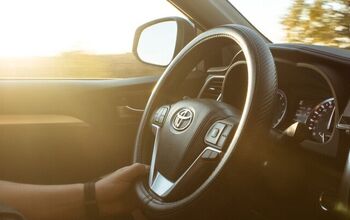


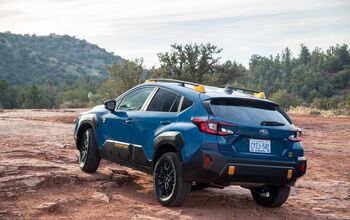



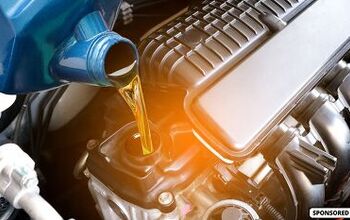

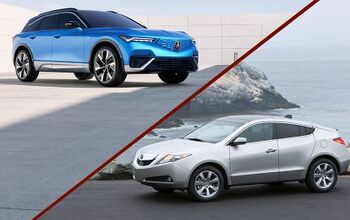

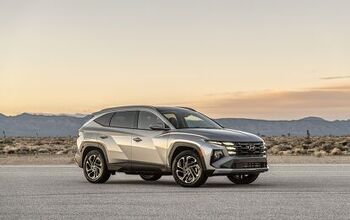
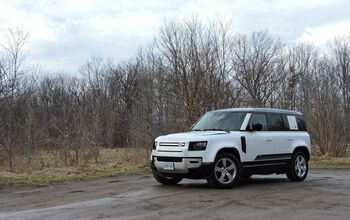
Comments
Join the conversation